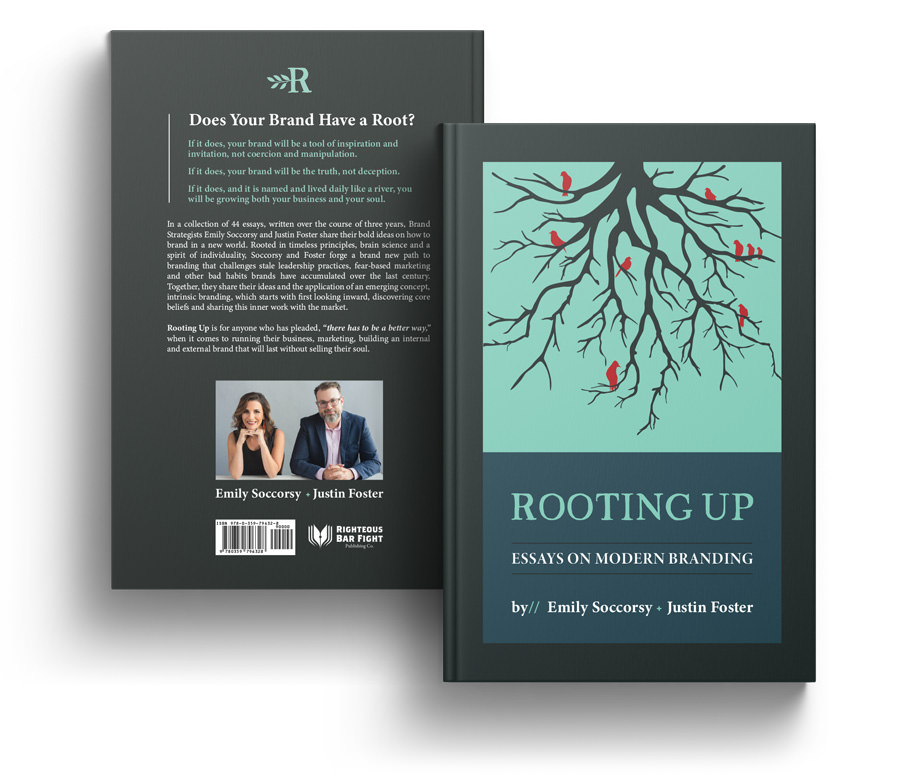Filed Under: Beliefs-Based Branding
Beliefs, as a component of brands, are one of those good news/bad news stories.
Good news: as business leaders, we’ve evolved. We recognize a business needs a deeper set of values to help it withstand the test of time. Beliefs help us grow as leaders, grow revenue and grow our teams in the ways that serve the business. As a result of this dawning awareness, it is now common practice for business leaders to codify their organization’s beliefs and values.
Bad news: It’s nearly equally common to then pat ourselves on the back, nod our heads in agreement over our lovely set of beliefs and then to, ahem, get back to work. Too many of us remain limited by the idea that our beliefs are separate from our business, from the work we do daily. That they are something we can actually set aside. We’re content to have beliefs in the company culture file, and we’re missing the opportunity to fully use our beliefs in what we do.
We posit something radical.
What if you made your beliefs the active and apparent guiding force behind all business decisions?
Not sure what we mean?
Here are just a few ways that might look:
- Use thought-provoking questions born out of your set of beliefs to filter job applicants for cultural fit. For example: say one of your core beliefs is love. What if you asked the interview question, “How do you show love to the people you work with? Work for? Serve as clients? Can you give me an example of how you did this in the past?”
- When faced with a tough business decision or a new opportunity, have the courage to ask yourself and your team: “Does this move align with our beliefs?” This doesn’t mean to ignore data and logic. It means incorporating the spiritual side of business into strategic decisions.
- Survey your customers, again and again, to ensure they are experiencing your beliefs (after all, a brand is how other people experience what you believe). Send a survey with the questions: “Our core beliefs are, U, X, W, Y, Z. Did these beliefs show up in your experience with us? If yes, how so?” Another opportunity to ascertain if your beliefs are alive in your business is to scan comments, reviews and emails for the use of your belief words.
- Incorporate your beliefs into your branding language across all platforms and mediums. This doesn’t mean burying them on some back page. It means being upfront about them — like home page of your website upfront. Declare them! If you are a B2B company, this would include coaching your sales team to share these beliefs and how they are personally aligned with them.
Why does this matter?
Everyone talks about authenticity, but you’re not really being authentic until you feel vulnerable in a conversation. A great way to be vulnerable is by sharing your company’s beliefs.
Bad news: Will it feel uncomfortable at first? Probably.
Will it come across as real, authentic, emotional and evocative?
Good news: If they are really your beliefs, then yes, it will. And you will likely make a real, personal connection that will sustain longer than one conversation.
Uncovering and defining your beliefs does require inner work. Inner work requires some intentional stillness. Outside of a Root Session, we have found the best way to uncover your beliefs is through introspection and expression.
Here are a few journal prompts to consider:
- What have you always believed that no one ever taught you?
- What are you working to instill in others?
- What is something you would commit civil disobedience to defend?
- How are your beliefs experienced by others?
- What are some non-negotiable character traits?
If you lead a team, share these prompts with them and ask them to complete them. We recommend they be completed privately, then have a share-out discussion. Then notice the common themes and threads. You will discover a secret: entities don’t really have beliefs. But the people who make up the entity certainly do. And when there is unity and synchronicity of beliefs, magic happens!
